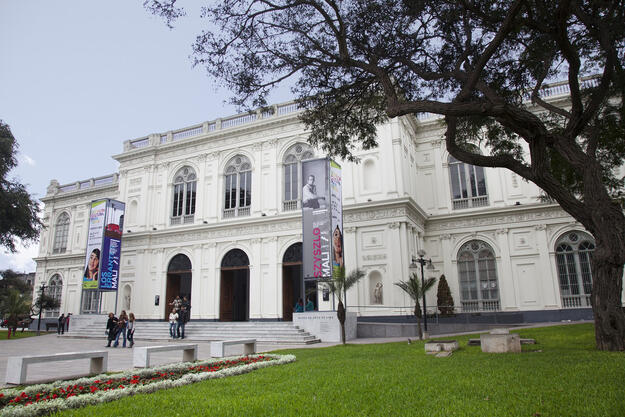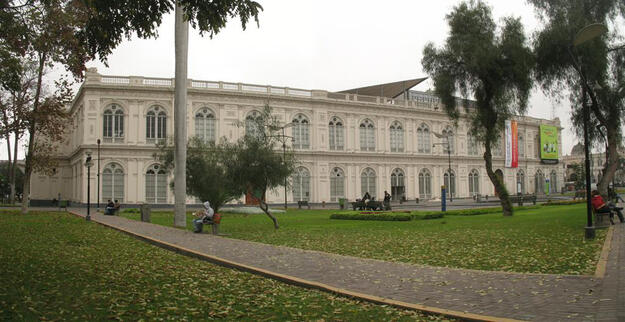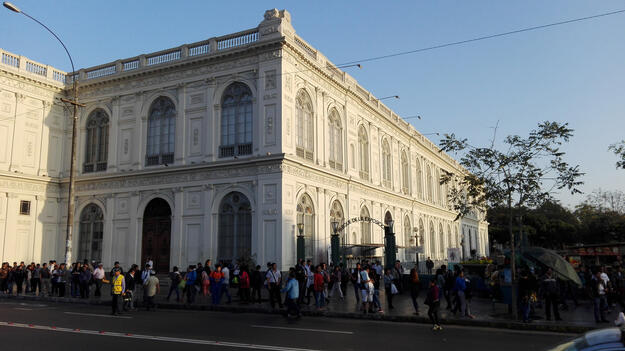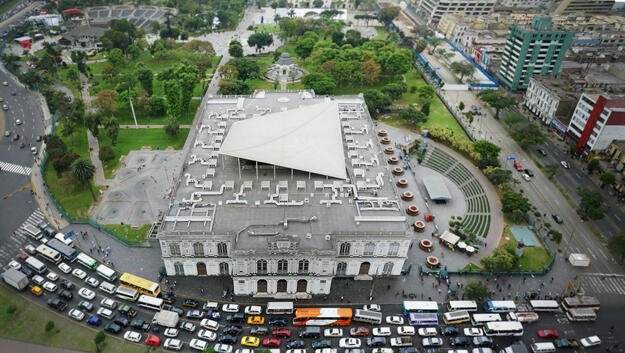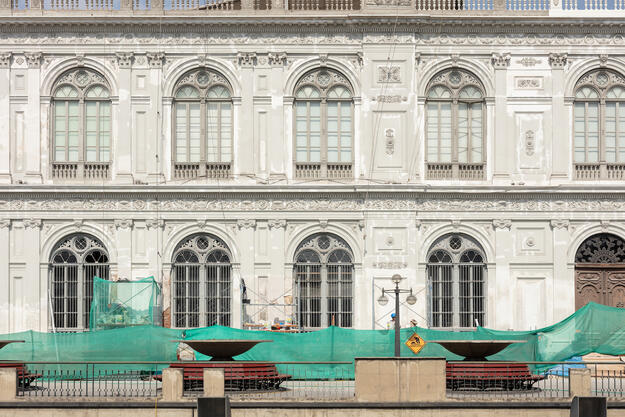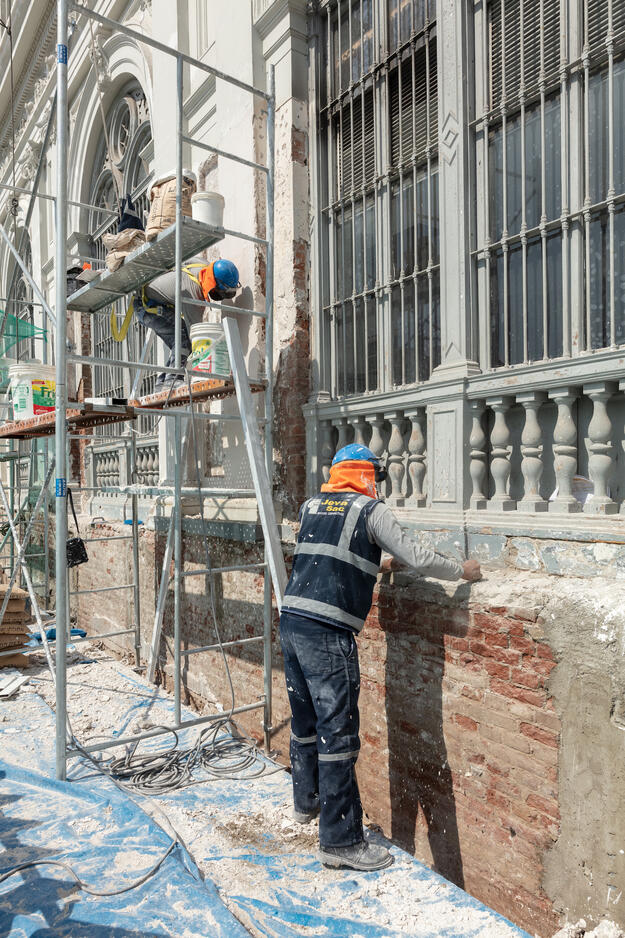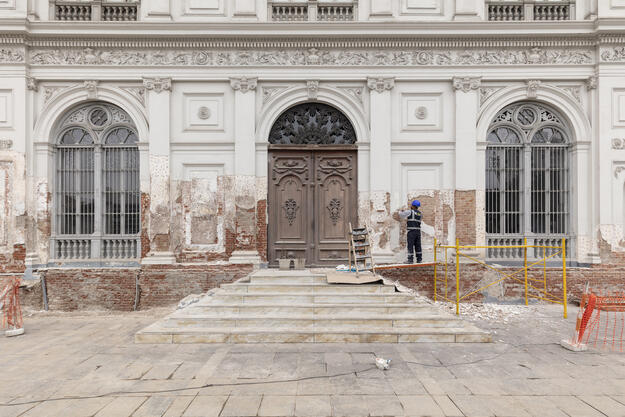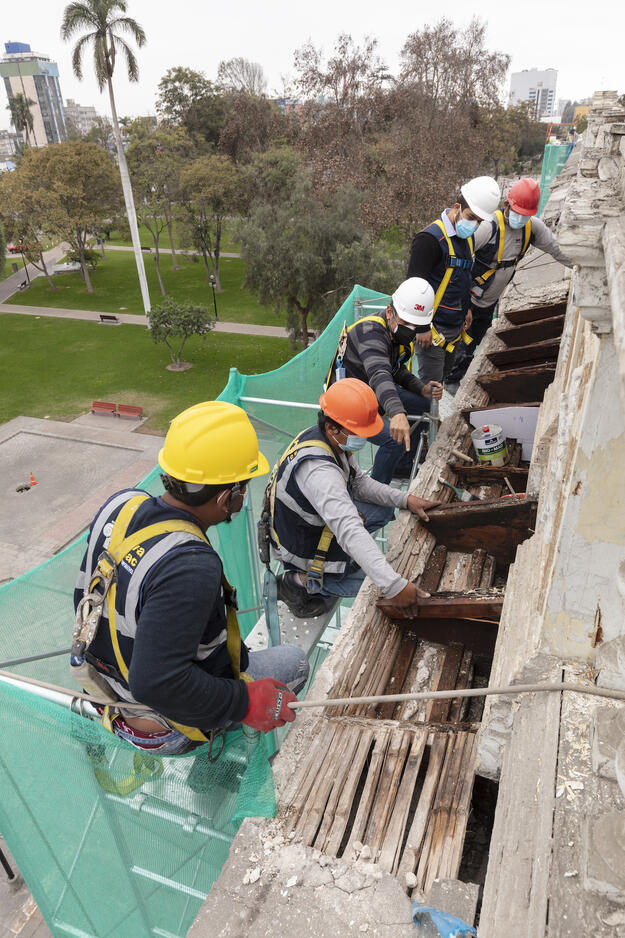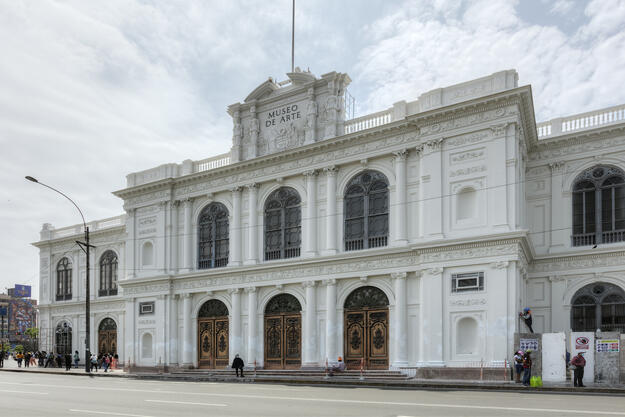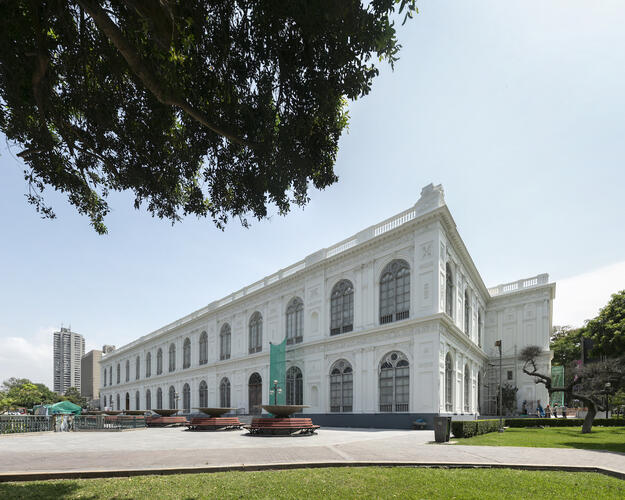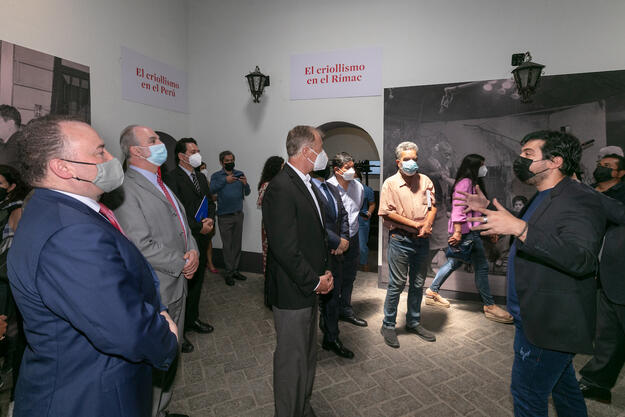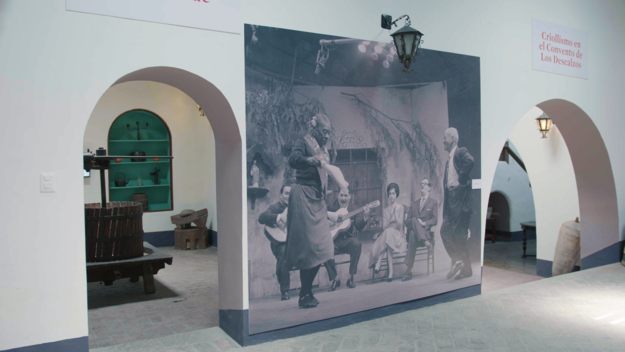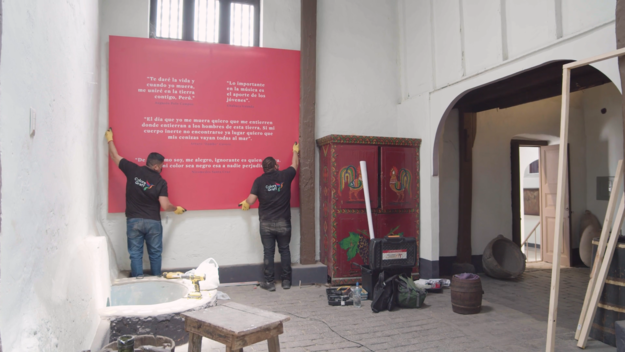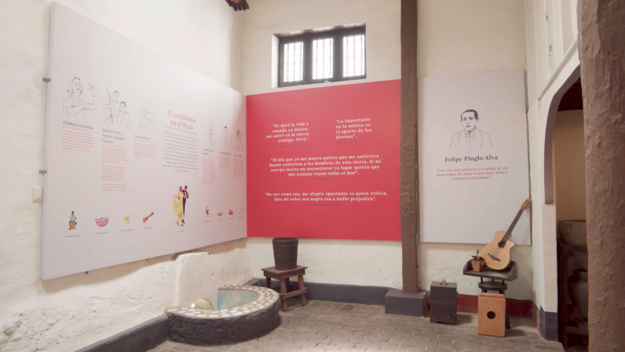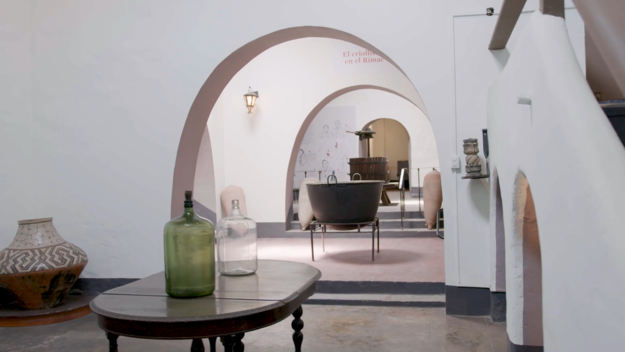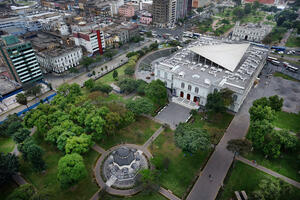MALI Museum - European Union Bicentennial Commemoration
Site History and Significance
An Iron Masterpiece
The Museo de Arte de Lima (MALI) is housed in the historic Palacio de la Exposición in Lima, Peru. Built to host the Lima National Exhibition of 1872, the Palacio de la Exposición was designed by Italian architect Antonio Leonardi and inspired by the European palaces of the Enlightenment period. The palace was one of the first buildings constructed specifically to house a large-scale exhibition and was one of the earliest iron-built masterpieces of Peru.
The palace facade is decorated with fluted Ionic columns and Corinthian-style pillars. Plaster moldings representing the arts and industry pay tribute to the 1872 Exhibition that was held in commemoration of 50 years of Peruvian independence and showcased the country’s industrial advancements.
The Palace Since 1872
During the Pacific War between Peru and Chile, the site was converted into a Red Cross hospital to tend to the wounded. It took on many functions through the years, housing the National Museum of History, the Ministry of Production, the House of the Parliament, the Direction of Transport, the Ministry of Agriculture, the electoral court, and the offices of the Municipality of Lima.
In 1955, the Municipality of Lima transferred ownership of the palace to Patronato de las Artes, a trust established to create MALI. Following a rehabilitation of the building led by the Peruvian government and its French counterpart, the museum opened its doors in 1961.
Our Involvement
European Union Bicentennial Commemoration
World Monuments Fund (WMF) Peru was awarded a commission to conserve the museum’s facade by the European Union in Peru within the context of its collaboration with the Metropolitan Municipality of Lima and MALI Museum to prepare for the Bicentennial of Peru’s Independence celebration.
Work focused on the integral conservation of the facade's four fronts and was completed in January 2022. Overall, the project included the restoration of wall segments, moldings, and ornaments, painting of exterior walls, and plaster coating, the restoration of the balustrade’s wood and pediment, work on the upper and intermediate cornice, the installation of pipes for the monumental lighting system, the improvement of the pluvial drainage at the roof, the implementation of a ventilation ditch around the building to protect it from humidity, and other technical interventions to preserve the facade.
Casa Criolla and the Descalzos Museum
Within the funds granted by the European Union, WMF Peru also committed to creating the 'Casa Criolla' at the Descalzos Museum in partnership with the Metropolitan Municipality of Lima, part of the Cultural Route of Lima and, more specifically, of the thematic route of ‘La Ruta Criolla’ (Creole's Route). The Las Bodegas sector inside the Museo de Los Descalzos was chosen as the location for the development of ‘Casa Criolla’. In alliance with the San Francisco Solano Missionary Province of Peru (owners of Museo de los Descalzos), the project was completed in February 2021, and included maintenance and implementation work in a kitchen, bathrooms, and other areas, an exhibition about creole culture, signage, a bicycle rack for museum users, and promotional materials.
This collaboration aims to invite public participation in a series of actions that promote the shared values of human rights, democracy, and the fight against inequality and gender violence.
Learn More
World Monuments Fund safeguards cultural heritage around the globe, ensuring our treasured places are preserved for present and future generations.
Sign up for our newsletter to receive regular updates on our projects, stories from the field, upcoming events, and more!
![]()

